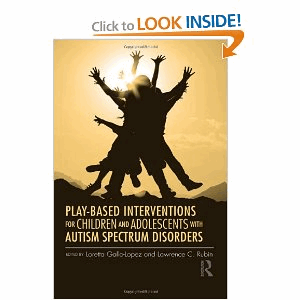Play Therapy and Autism Spectrum Disorders
by William Van Ornum, Ph.D. on

Decades ago I was a pre-doctoral intern in clinical psychology and was assigned a therapy case of a young man who would probably now be considered to be experiencing an autism spectrum disorder. He was extremely guarded, withdrawn, and tactile defensive (not liking to touch objects in his environment). Three times each week we met in the play therapy room.
After several weeks he had not said a word and liked to play repetitively with an ambulance, cars, and a house. I was starting to wonder about the effectiveness of the entire endeavor and brought it up with my supervisor. “Just wait and listen and observe,” she said. After several months I discovered that one of his parents had died at home and had been taken by ambulance from his house. Soon he began to talk about this. And he began to talk about other things as well.
We read a great deal now about genes and autism; brain chemistry and autism; and we learn about the effectiveness of structured and direct therapies such as Applied Behavior Analysis (ABA). The latter can be extremely effective, in that it amounts to a “re-engineering” of personality through positive reinforcements and interventions.
With many children a lighter tough may be needed, one that respects their need to reveal things on their own terms and an their own timeline. Gradually a genuine human relationship can emerge in play therapy–and isn’t this one of the mot important qualities we are trying to encourage in children along the autism spectrum disorder?
Loretta Gallo-Lopez and Lawrence C. Rubin have published an edited collection, Play Based Interventions for Children and Adolescents with Autism Spectrum Disorders .Here is the book’s description: “Play-Based Interventions for Children and Adolescents with Autism Spectrum Disorders explores the most recognized, researched, and practical methods for using play therapy with the increasing number of children diagnosed with Autism Spectrum Disorders (ASDs), and shows clincians how to integrate these methods into their practices. Using a diverse array of play-based approaches, the book brings together the voices of researchers and practicing clinicians who are successfully utilizing play and play-based interventions with children and adolescents on the autism spectrum. It also examines the neurobiological underpinnings of play in children on the autism spectrum and the overall effect of play on neuro-typical and neuro-atypical development. Finally, through careful integration of theory with real-world clinical case application, each chapter also shows clinicians how to incorporate a particular treatment approach and make it a viable and effective part of their work with this challenging clinical population.”
Dr. Eric Green has written an important chapter on Jungian Play therapy. I’ll have more to say about this in an upcoming post!








 Host Companion
Host Companion